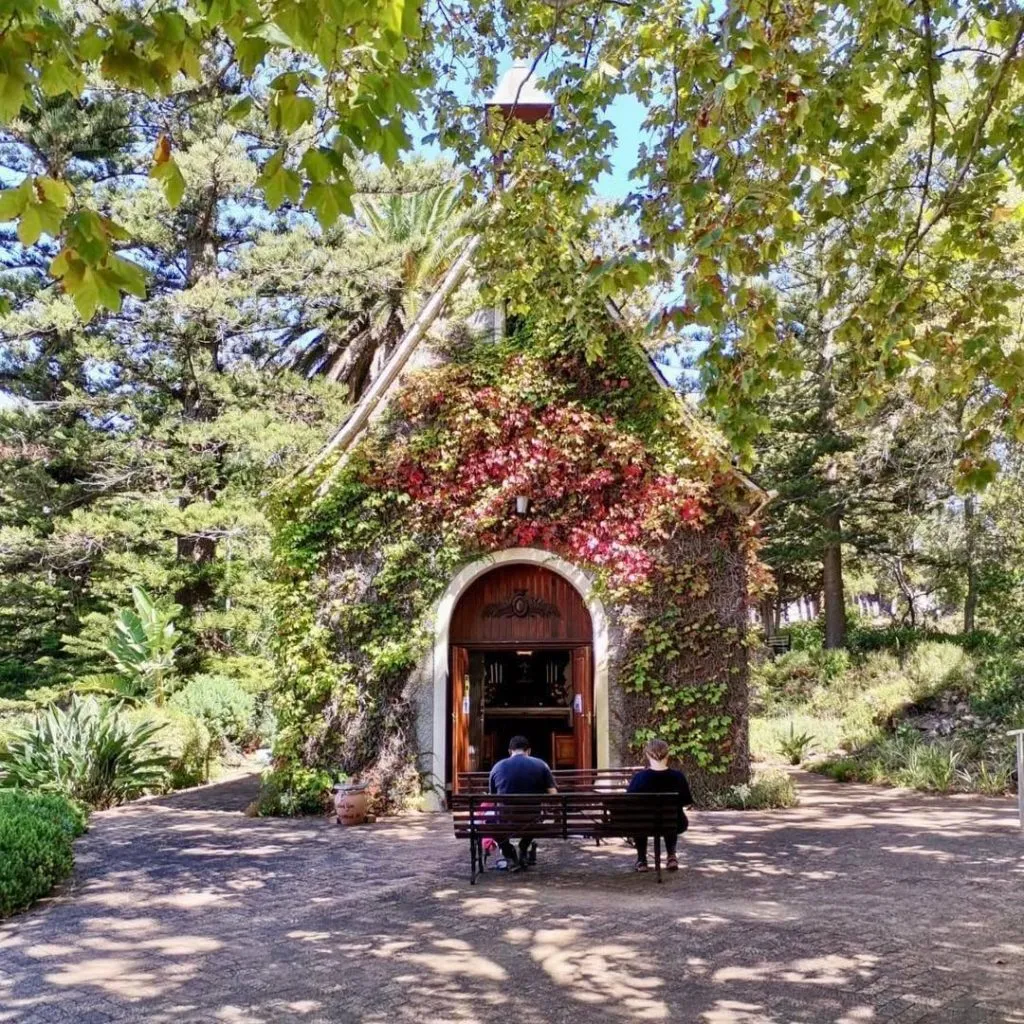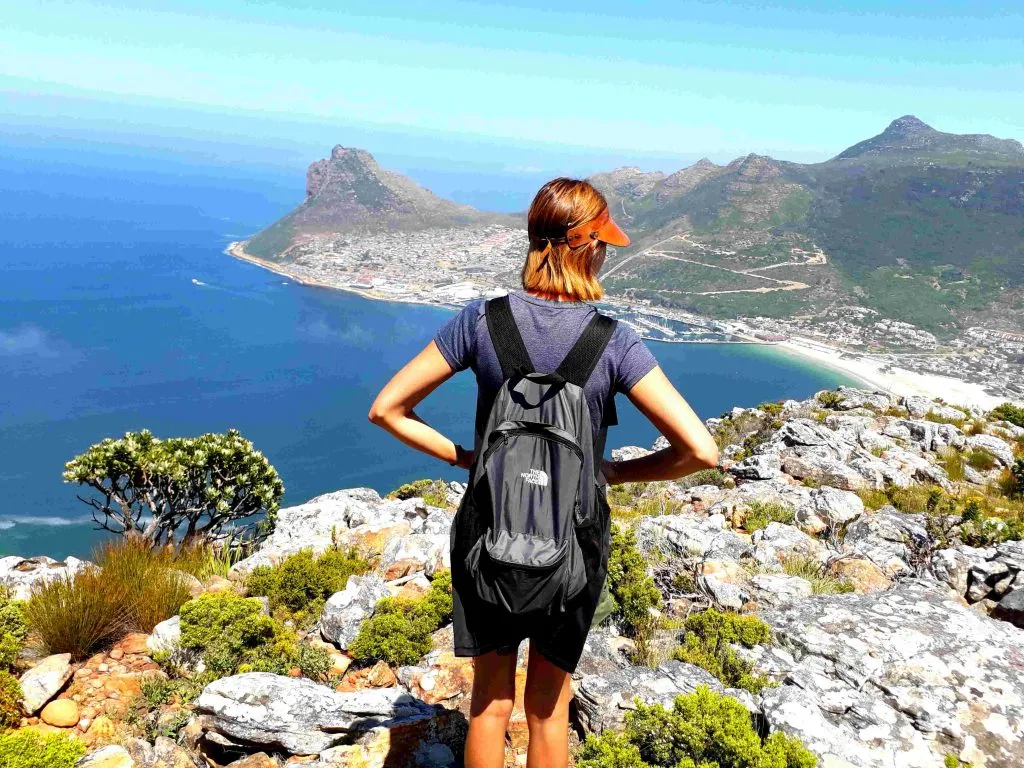Cape Camino, a beautiful “pilgrimage” route, is a fantastic opportunity for visitors to connect themselves with South Africa’s vibrant rural heritage.

Pilgrim’s Progress
Dinner at Die Ark is always an animated affair.
Through the day, this grassy campsite – home to several cottage type accommodations – along South Africa’s Swartland area lies silent. After sunset, however, it comes alive with the arrival of backpackers traveling through the countryside.
Die Ark means “The Ark” in Afrikaans, a place where travelers can rest, relax and recharge. An important pit stop on the Cape Camino “pilgrimage” route.
The hot afternoon has yielded to a more pleasant and cooler evening. The tractors that had been farming wheat all through the day have fallen silent, their engine hums replaced by the unwelcome chorus of cicadas and crickets. The local farmers, or boers, have retired for the night, after grazing their cattle and sheep on the veldts all day.
This is the South African countryside or, as the locals call it, the “soul of the country”. It’s magical out here – a far cry from the nearby bustling city of Cape Town. Except for the occasional horns of freighters plying the Atlantic Ocean, nothing much happens in the countryside during the day. Evenings are a different story altogether.

A group of hungry travelers has just arrived at Die Ark after a day of walking from a day-long Camino, or walk. Standing at the entrance, camp boss Bregda Mostert greets her guests walking in with a warm “Hallo. Hoe gaan dit?” (Afrikaans for “Hello! How are you?”).
The visitors nod weakly in return. After completing that day’s walk, they are more interested in knowing what’s for dinner. The travelers, known as “pilgrims”, have just completed that day’s walk or “pilgrimage”, discovering the rich rural heritage inland from the West Coast. As they try to find a place on one of the many benches around the campsite and untie their soiled boots, they hungrily eye the meat and fish smoldering on the braai, the open fire barbecue in Die Ark’s front yard.
Bregda knows her guests are starving and instinctively rushes over to check the snoek fish roasting over the hot charcoal. Meanwhile, her husband Teubes scurries to supply the guests with water, welcome drinks and refreshing towels. The Mosterts work in tandem – they have been hosting pilgrims at their homestay for years now and have perfected their rhythm over time.
Nearby, Bregda’s friendly German Shepherd Leila keeps a close watch on the new visitors who have trooped into the campsite. She’s used to strangers and acknowledges the more friendly ones with a wag of the tail.
The sun has just fizzled into the ocean, bringing some relief to the visitors. It would be some time before dinner would be announced. In the meantime, the pilgrims continue to enjoy the Mosterts’ tales about the countryside.
In the background, the chaperones, who have accompanied the pilgrims during the walk to ensure their safety and well-being, are also taking a much-needed break. The chaperones are among the trusted team of people overseeing Cape Camino, an approximately 700-km walking “pilgrimage” route along the country’s Winelands, Sandveld, West Coast and Cape Town area.
Cape Camino is an interesting initiative run by the affable Gabrielle Andrew and her daughter Peggy. The concept was launched some 12 years back by Gabrielle after being inspired by a similar idea she saw in Spain, called Camino de Santiago. She believed Cape Camino as an excellent opportunity to showcase South Africa’s rural diversity and Cape Town cosmopolitan, while helping the local economies. Peggy joined her early in the launch phase.
“Cape Camino is one of rural South Africa’s best kept secrets and, personally for me, it’s a fantastic opportunity to tell the story of the country’s rural heritage to the rest of the world,” says Gabrielle. Awareness is therefore largely through word of mouth, with organizers only looking to host smaller and manageable groups of “pilgrims” at a time.

Currently, Cape Camino offers a 40-day pilgrimage experience, which is broken into six well-mapped off-road and urban routes, ranging from 10 to 25 km per day and spanning single or multiple days, based on the visitors’ convenience. Each Camino offers ample opportunities for personal space growth, adventure, meditation and fellowship, while uniting sacred spaces, historical cottages, conservation areas, rock art, handicraft shops, restaurants, winelands, and, of course, beautiful beaches.

Pilgrims carry a Cape Camino passport which gets stamped by hosts each day. A digital certificate of completion is issued upon receiving 24 or more stamps over 24 or more days.
The Caminos can be physically challenging and certainly not for everyone. The trips are carefully curated so the visitors can derive the maximum from their experience, while also interacting with the local farmers. The visitors walk through these attractions chaperoned by local community members, volunteers and farm workers.
Each stop is different. Sometimes the pilgrims are hosted at modest homestays and sometimes more established guesthouses. There is “no one standard” but rather the flavour of South African hospitality.
The Caminos, Gabrielle says, offer a different experience for every person – some prefer solitude and contemplation, others visit in August and September when the countryside is carpeted by billions of wildflowers, and still others take the pilgrimage to learn the rustic culture and interact with the locals.
“We get all types of visitors of all ages and from all countries,” Gabrielle points out. “Each of them seeks out a different experience. It’s their own personal journey. This is an excellent opportunity for them to understand South Africa’s rich culture and history.”
Since the project’s launch, Cape Camino has directly benefited the rural communities across the West Coast, Swartland, Drakenstein, Berg River and Cape Town regions, empowering them with employment and entrepreneurial opportunities.
As I listen to the pilgrims passionately speaking about their day’s adventure, Bregda reappears and announces dinner. The buffet is modest but fresh, gluten-free, chemical-free and preservative-free food – exactly how the locals would like it to be.

The hungry visitors move towards the buffet table featuring simple boerekos, or farmer’s meals, such as snoek en patat (or barbecued fish with mashed sweet potatoes), grilled boerewors (beef sausages), homemade date balls, local olives and fresh salads. All these are Bregda’s specialties, I am told.
Dinner over, the pilgrims continue to lounge in the yard, thoroughly relaxed now. Some of them compare notes and photos with each other, while others sit back and enjoy the soft instrumental music playing softly on a small Bluetooth speaker.
Soon, the Mosterts announce that it’s time to retire. Bregda, followed by the faithful Leila, escorts the pilgrims to their modest accommodations for a much deserved sleep. Even the cicadas have fallen silent. It’s light out at the camp soon after.
The adventure continues tomorrow. For now, another day has come to an end at Die Ark!





















